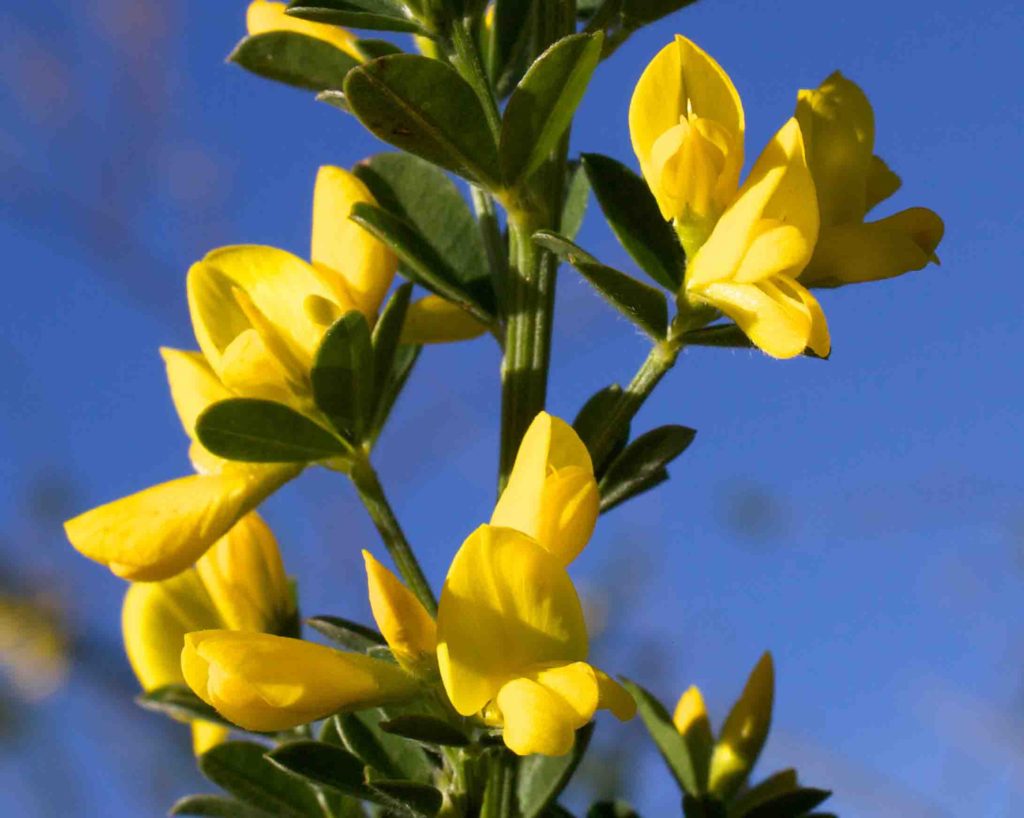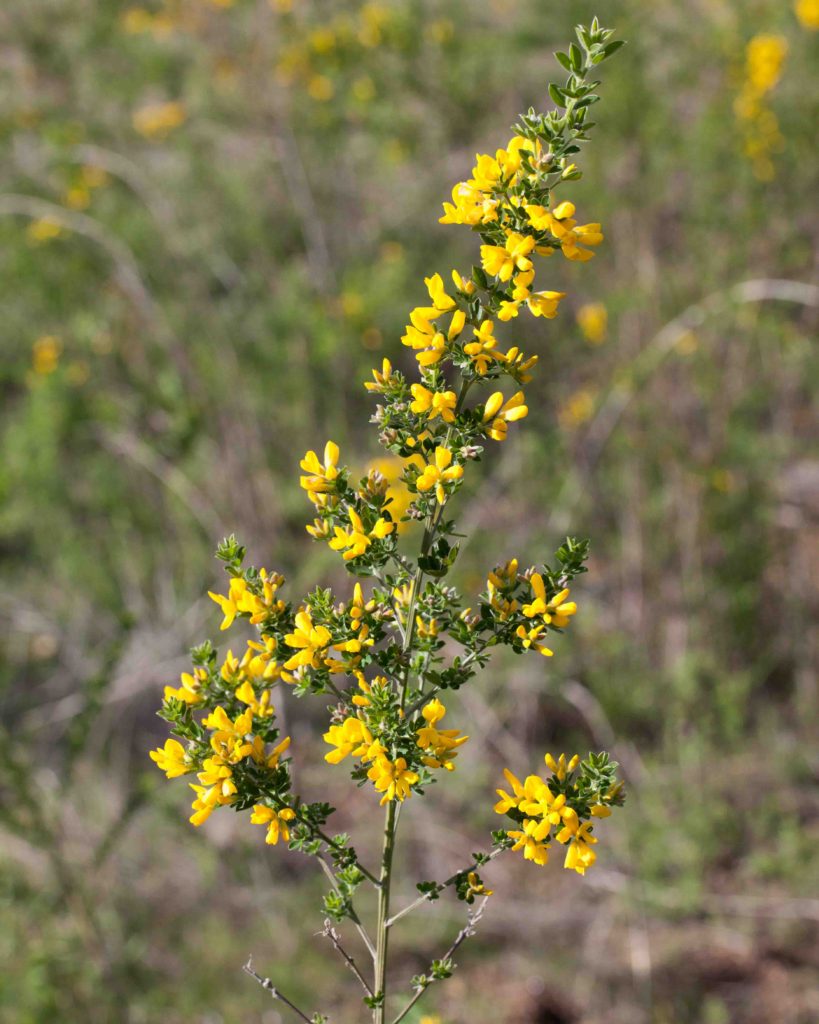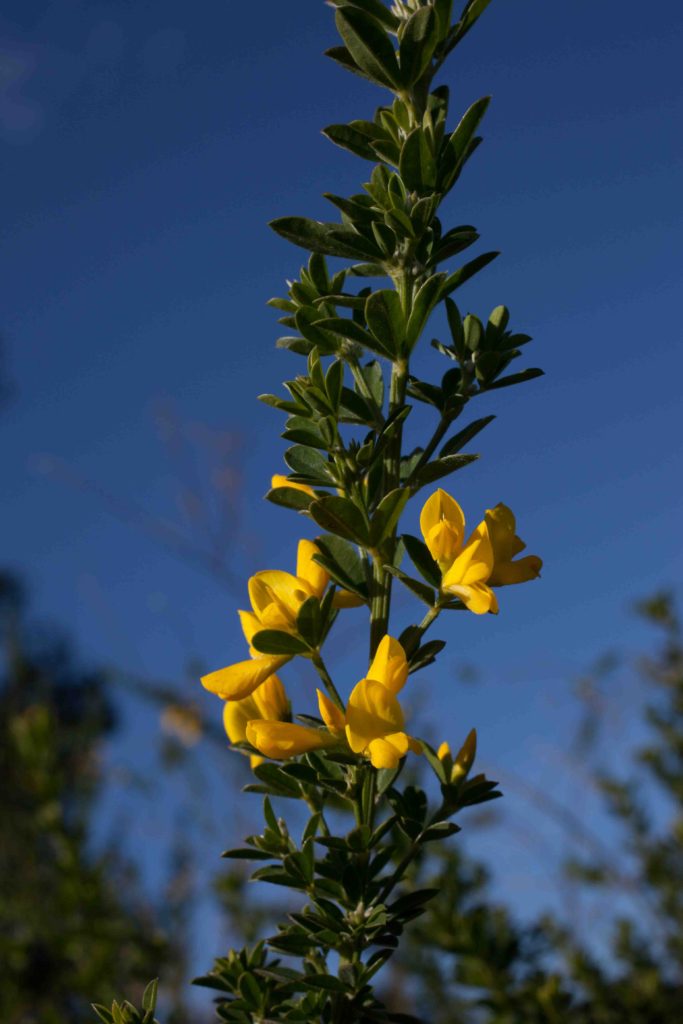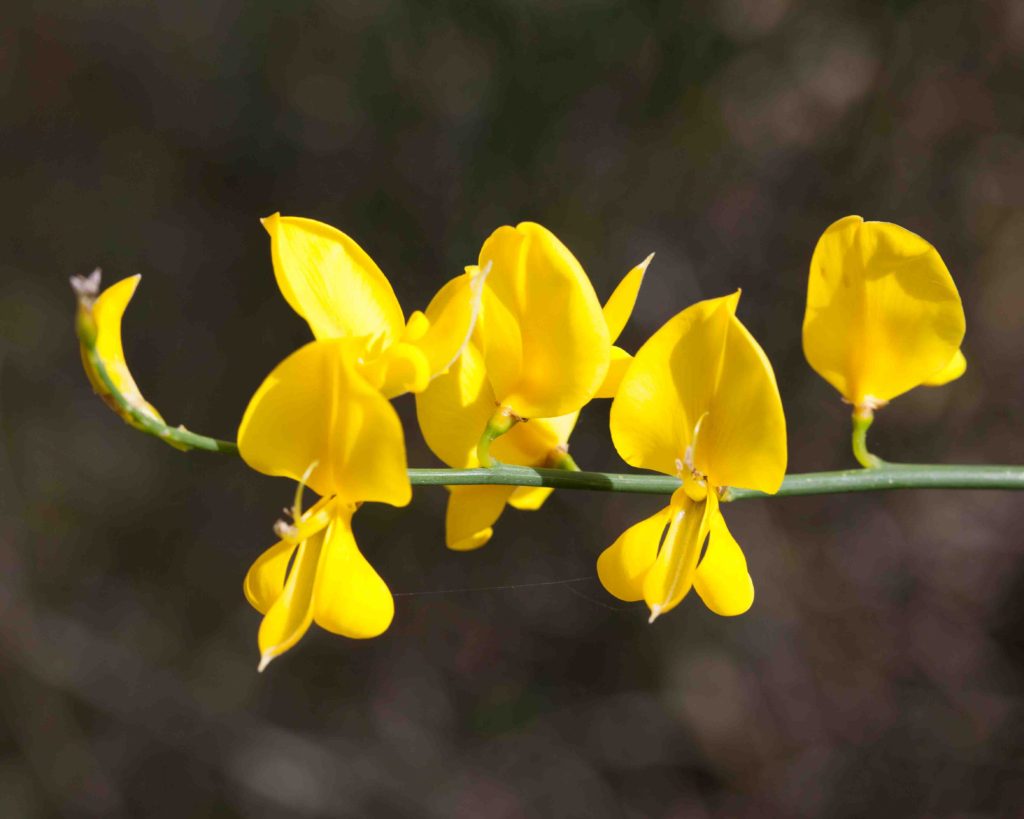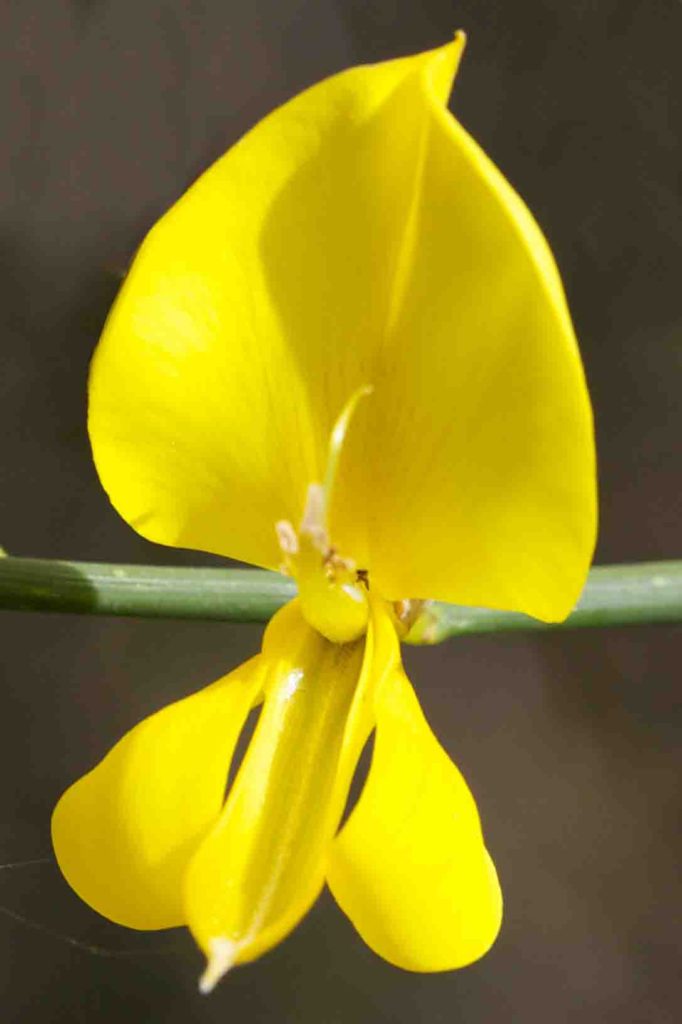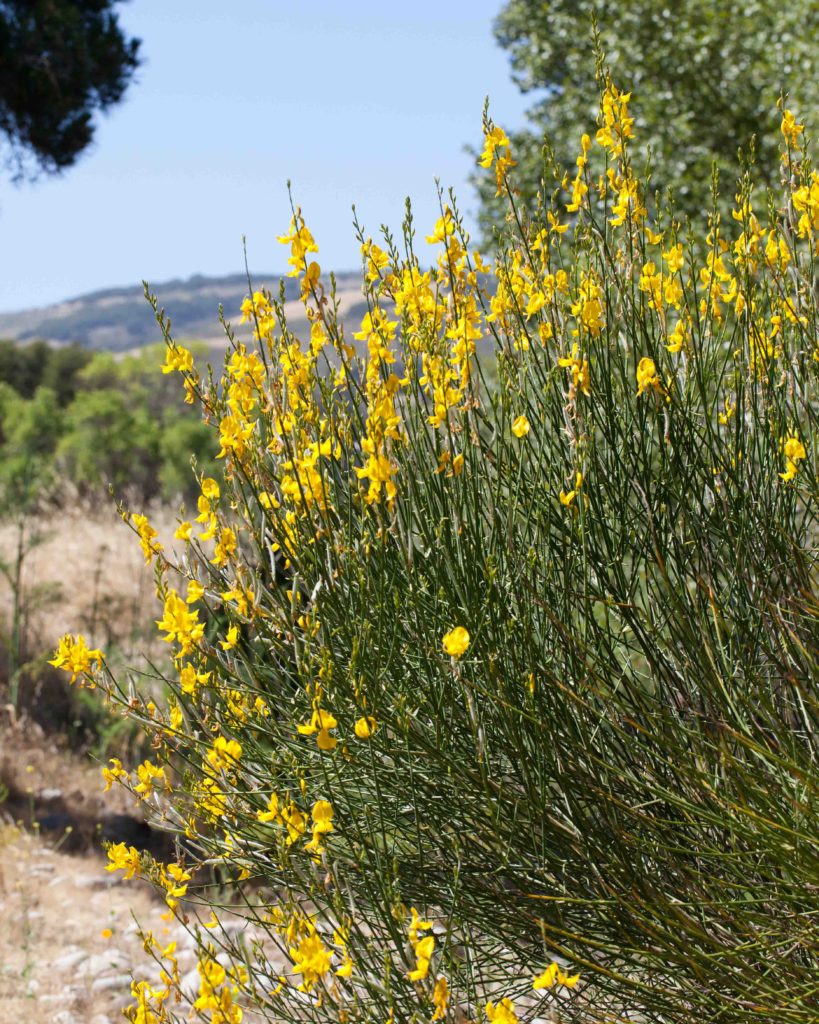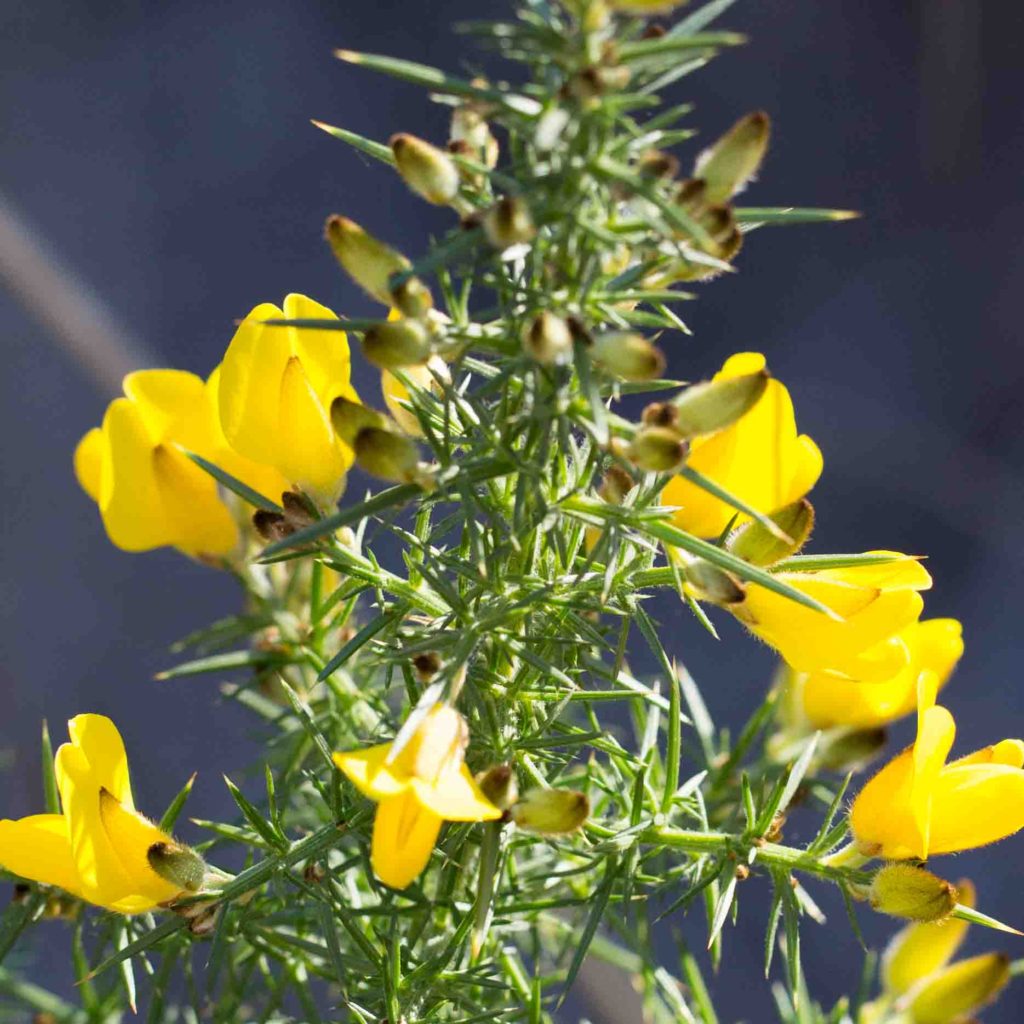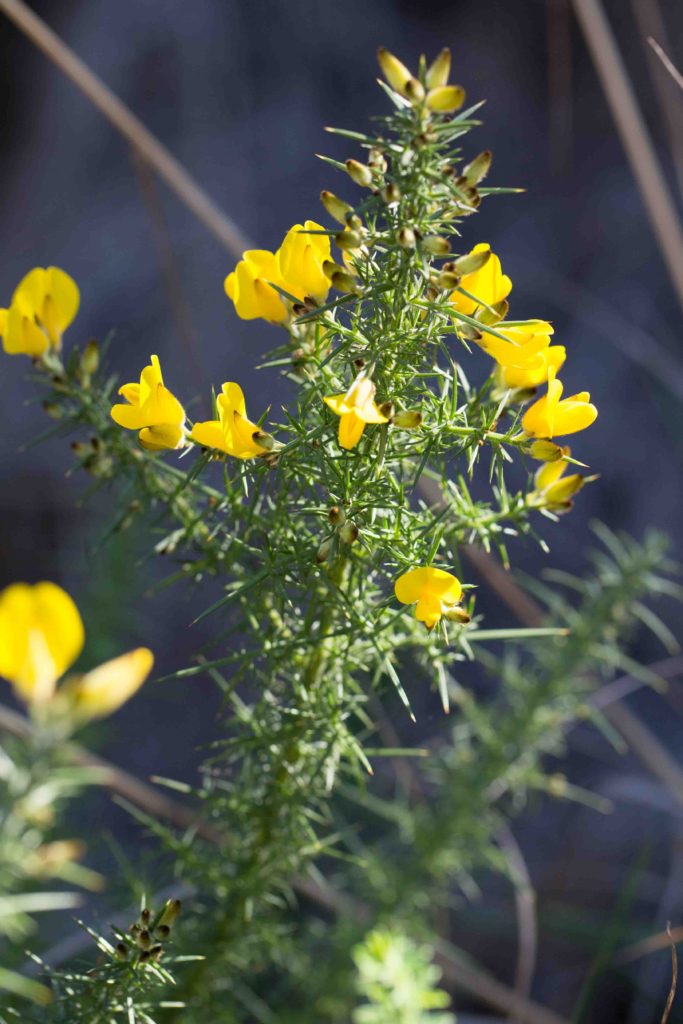Fabaceae: Pea Family — Broom
The pea family has 5-petaled flowers, consisting of a wide upper banner petal, two wing petals, plus two lower petals which are fused to form a boat-shaped keel. Many produce heads or spikes, consisting of multiple individual flowers (examples are lupines and clovers). The seed pod is generally a “legume”. This is a long, flattish pod, swollen by the seeds, and splitting lengthwise along both the top and bottom.
This page shows three highly invasive plants. In particular, French Broom has an adverse impact on the landscape in parts of the Monterey Peninsula. It should be eliminated wherever it is found, no matter how pretty it may appear when in flower.
French Broom – Genista monspessulana
Blooms:
Mar–May
Plant Height:
< 3 m
Flower Size:
Medium
Origin:
Mediterranean
Invasive?
Yes – high
Habitat:
Chaparral, woodland, disturbed areas
Notes:
This is one of the most aggressively invasive plants found on the Monterey Peninsula. It forms a large, spreading shrub that has small, oval, evergreen leaves and a profusion of bright yellow flowers. Mature seed pods burst open, scattering seeds over a wide area. It is estimated that a mature plant can produce 8,000 seeds in a single season. Young plants are easy to pull up when the ground is soft, but eradicating it is extremely difficult, and requires great persistence over a prolonged period.
Spanish Broom – Spartium junceum
Blooms:
Mar–June
Plant Height:
< 3 m
Flower Size:
Medium
Origin:
Mediterranean
Invasive?
Yes – high
Habitat:
Disturbed places, often near water
Notes:
This has a distinctive appearance, with its rush-like stems, and only a few deciduous leaves. The flowers are larger than those of French Broom (Genista monspessulana, see above), paler and more delicate.
Gorse – Ulex europaeus
Blooms:
Apr–July
Plant Height:
< 3 m
Flower Size:
Medium
Origin:
Europe
Invasive?
Yes – high
Habitat:
Disturbed places
Notes:
Another highly invasive species, especially near the coast, and a very unfriendly one. Twigs and leaves are modified into vicious green spines, 1–3 cm long. Flowers are like those of French Broom (Genista monspessulana, see above). It sometimes lines the fairways in British seaside golf courses – a distinct incentive to keep one’s ball out of the rough. There is a saying in England “when the gorse is out, it’s kissing time”—a reference to the belief that gorse flowers throughout the year in its native habitat.
